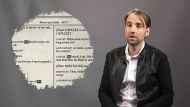Planning to have a caesarean before 39 weeks dramatically raises the risk of the baby going on to experience developmental delays in school, Sydney researchers say.
Early planned births were linked to a 26 per cent increased risk of developmental delay for babies born at 37 weeks, found the study of 153,000 babies born after 32 weeks in NSW.
More News Videos
Childbirth without the 'trauma'
Western Sydney University has been running trials of an antenatal course that focuses on pain relief techniques, resulting in a 44 per cent lower rate of caesarean births.
Babies born by planned caesarean at 38 weeks had a 13 per cent increased risk compared to babies born vaginally after a spontaneous birth.
All obstetric interventions were associated with an increased risk of developmental delay, found the study published in the journal Pediatrics.

The researchers at the University of Sydney and Royal North Shore Hospital caught up with the children when they reached kindergarten to assess their physical health and wellbeing, language and cognition, social competence, emotional maturity, general knowledge and communication.
Those who scored in the bottom 10 per cent in two or more of these areas were deemed to be developmental high risk.
The risk of a baby being developmentally vulnerable at school age increased the earlier they were delivered, after accounting for other factors that may affect development including socioeconomic disadvantage, the age of the mothers, whether they smoked during pregnancy and fetal growth restrictions.
"Because the timing of planned birth is modifiable, delaying birth for an additional week or more may have significant long-term benefits," the authors wrote.

But the greatest risk was to babies delivered by caesarean section after induction, they said.
The rate of planned births before the 39-40 week gestation window has increased in Australia in recent years, accounting for almost half of all births nationally, the research authors said.
The shift has been largely driven by a rise in caesarean sections and induced labours.
Vaginal births accounted for 56 per cent of births in NSW in 2015. Just under 20 per cent of births were planned caesarean, and another 12 per cent were emergency caesareans, NSW Health statistics show.
While the link between lower gestational age and poorer development was well known, "our results revealed that poor development is further exacerbated in the case of planned birth, where a considered decision made to deliver an infant determines gestational age", said co-author Associate Professor Natasha Nassar at the University of Sydney's Menzies Centre for Health Policy.
"Significant changes in clinical practice have seen an increase in planned births before 39-40 completed weeks' gestation from an increased use of primary and repeat caesarean section and a greater use of labour induction.
"It is of paramount importance to ensure there are no unintended harms from such a significant shift in clinical practice," she said.
The findings supported current guidelines recommending that being induced or having a pre-labour caesarean for non-medical reasons should not be routinely carried out before 39 and 40 weeks' gestation.
But lead author Jason Bentley at the University of Sydney's Menzies Centre for Health Policy said there was an urgent need to develop strategies that would encourage "more judicious clinical decision making about the timing of planned birth.
"In cases where labor occurs naturally before 39 weeks or planned birth is unavoidable, it is important that there are appropriate interventions and support in early childhood for these potentially vulnerable children."
Why women choose early caesareans
The decision by some clinicians and families to have a planned early caesarean is often based on the belief that it is a safer option, especially when a mother has already experienced a traumatic birth.
Caroline Jones, 33, opted for a planned caesarean during her second pregnancy after her oldest son Monty was born via emergency caesarean.
"It's very scary to have the alarm of his heart rate dropping," Ms Jones said of her first birth.
She had been leaking amniotic fluid for a week before the birth. Staff at the Royal Hospital for Women in Randwick were concerned her fetus had stopped growing, and she had little fluid left.
"They decided to induce me then and there. Monty was in distress. I just wanted him out quick," she said.
"I didn't want to go through another emergency caesarean again."
Ms Jones understood the risks of planned caesarean, still a major surgical operation.
"But it was a bit more controlled this time and I knew what to expect," she said.
Ms Jones said staff booked her in for her caesarean at exactly 39 weeks' gestation but did not explain the reasoning for their timing.
"It wasn't mentioned. They just said I shouldn't leave it 'til 40 weeks just in case I went into labour.
"But if I had the choice [for a future pregnancy], I'd wait 'til the 39-week mark."









